The most important safety measures that make drivers responsible for driving and braking are brakes, and this guide will help you to know about different types of brakes, including its types such as disc brakes, drum brakes or regenerative braking and brake assist systems (ABS). For each type, we will look at their advantages and disadvantages and aso their operating models, performance characteristics and applications to provide drivers with information that will help them choose the best braking system for them.
What is a Car Brake?
The braking system in cars uses friction to convert the car’s energy into heat to stop the car, and when you press the pedal of the brake then the fluid is pressurised and the flow goes up to the wheels. In disc brakes, callipers are being used and which is used to compress the brake on the rotating disc, while in drum brakes, brake shoes are used to apply the pressure to the rotating drum. The heat generated from the friction causes the wheels and ultimately the car to slow down, and this device allows you to control the braking and speed of your car, which is important for safe driving.
Car brake names list
- Disc Brakes
- Drum Brakes
- Anti-lock Braking System (ABS)
Types of Car Brake
| Feature | Disc Brakes | Drum Brakes | Anti-lock Braking System (ABS) |
| Operating Mechanism | Caliper squeezes pads against a rotating disc | Wheel cylinder pushes shoes outward against a rotating drum | Electronic system modulates hydraulic pressure to prevent wheel lockup |
| Components | Caliper, disc (rotor), brake pads | Wheel cylinder, brake shoes, drum | Wheel speed sensors, electronic control unit (ECU), hydraulic modulator |
| Typical Use | Front wheels of most modern cars, some high-performance rear wheels | Rear wheels of some cars, older vehicles | All wheels on most modern cars |
Unveiling the Brake: A Tour of Different Car Brake Types
Brakes are the unsung heroes of automotive safety, providing the crucial ability to control speed and stop a vehicle effectively and various types of brakes cater to different driving needs and vehicle designs. The most common types are disc and drum brakes.
Here’s a breakdown of the common car brake types, highlighting their advantages and disadvantages:
1. Disc Brakes:
Disc brakes use callipers which are used to compress the pedals of the brakes against rotating discs attached to the wheel hub which is used for converting the kinetic energy into heat to slow or stop the car. However, they get rusted easily and regular maintenance is required.
-
Mechanism:
- A calliper squeezes pedals of the brake against a spinning disc (rotor) connected along with the wheel of the car and friction between the pedals of car and disc slows down the wheel of the car.
-
Advantages:
-
Superior Heat Dissipation
-
Discs have better ventilation, allowing for the efficient heat transfer between wheels and helps to prevent brake fade during heavy braking.
-
More Responsive Braking
The direct contact between calliper and pedals of the brakes creates a quicker and more precise & comfortable braking feel.
-
Better Performance in Wet Conditions
Disc brakes are less affected by water as they are designed in such a way that it allows for easier water dispersal between brakes.
-
Disadvantages:
-
Susceptible to Wear and Tear
When pedals or brakes are exposed it is more prone to damage from debris, dirt, and road contaminants which can lead to corrosion.
-
Requires More Frequent Pad Replacement
Pedals of brakes wear down faster due to the direct friction between them and needs replacement more often as compared to drum brake shoes.
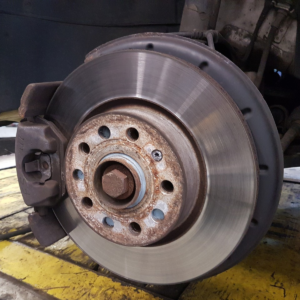
2. Drum Brakes:
Drum brakes utilise it’s brake shoes that is used to press against the inner surface of a drum attached to the wheel hub and then converts kinetic energy into heat to slow or to stop the car and they are also cost-effective, durable, and self-adjusting but can suffer from the reduced cooling efficiency and are basically less effective as compared to disc brakes.
-
Mechanism
In drum brakes when wheel cylinders push brake shoes outward against the inner surface of the rotating drum connected with the wheel then the friction between the shoe and drum slows the wheel.
-
Advantages:
-
Simpler Design
-
Drum brakes are less complex and generally cheaper to manufacture and replace as compared to other brake systems.
-
Less Expensive to Replace
Brake shoes tend to last longer than pedals of the brakes as they have a larger contact area with the drum.
-
Disadvantages:
-
Less Effective Heat Dissipation
-
It is less effective as enclosed drums trap heat, leading to brake fade during long braking.
-
Prone to Fading
It is prone to fading as heat builds up inside the drum and braking effectiveness can decrease significantly.
-
Less Responsive Braking
It is less responsive as indirect contact between the shoes and the wheel can lead to slightly softer and also less immediate braking feel as compared to disc brakes.
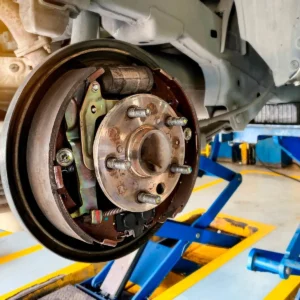
3. Anti-lock Braking System (ABS):
The Anti-lock Braking System (ABS) helps to prevent wheels from locking up during the period of braking, enhancing car control and reducing the stopping distances on slippery surfaces. ABS rapidly helps to modulate brake pressure to each wheel, allowing drivers to maintain steering control to improve efficiency and it helps to improve safety but can also increase stopping distances on loose surfaces which can lead to accidents.
-
Mechanism
An electronic system with wheel speed sensors, a control unit, and a hydraulic modulator. It monitors wheel lockup during braking and modulates hydraulic pressure to prevent the wheels from completely stopping. This allows the driver to maintain steering control while braking heavily.
-
Advantages:
-
Prevents Wheel Lockup
-
It prevents wheel lockup as ABS helps to maintain steering control during emergency braking situations which helps the wheels from locking up.
-
Safer Braking on Slippery Roads
It is safer braking on slippery roads as ABS helps for more controlled braking on surfaces with low traction, like wet or icy roads.
-
Disadvantages:
-
Increased Cost and Complexity
-
There is increased cost and complexity as ABS adds complexity to the braking system, increasing the cost of the car and maintenance.
-
Longer Stopping Distances
Longer stopping distances as on loose surfaces like gravel, ABS can extend stopping distances slightly. However, it’s benefit of maintaining steering control typically outweighs this drawback.
Demystifying the Drive: How Different Car Brake Work
Car brakes are essential for vehicle safety, using different mechanisms to ensure effective stopping power. Disc brakes use rotors and calipers to create friction, offering excellent heat dissipation and performance, especially at high speeds. Drum brakes, more common in older or budget cars, press brake shoes against a drum, being simpler and cost-effective but less efficient under heavy use. Anti-lock braking systems (ABS) prevent wheel lockup during sudden stops, enhancing control and reducing stopping distances on slippery surfaces. Transform your garage into a profit machine with advanced garage management software, optimizing your brake maintenance and repair services.
Here’s is the detailed explanation of the working mechanism for each type of car brake system:
1. Disc Brakes:
Disc brakes use callipers to squeeze the pedals of the brakes against a rotating disc attached to the wheel hub, converting kinetic energy into heat to slow or stop the car and they offer the efficient braking performance, superior cooling properties, and resistance to brake fade away under heavy use. However, they can be prone to corrosion and require periodic maintenance.
-
Pressing the Pedal
Pressing the pedal when you step on the brake pedal, it pushes a piston in the brake master cylinder which pressurises brake fluid, which helps to travel through brake lines.
-
Callipers and Pads
The pressurised fluid reaches the calliper at each wheel and the calliper houses a piston on either side, which is forced outwards with the help of fluid pressure.
-
Squeezing the Disc
Squeezing the disc as pistons press brake pads against the flat, disc-shaped rotor (spinning with the wheel).
-
Friction Creates Stopping Power
The friction between the pads and the rotor is what slows down the wheel and ultimately the car with the help of friction which creates stopping power.
-
Heat Dissipation
The friction generates a lot of heat, which is then absorbed by the disc and pedals of the car and then radiated out into the surrounding air. This is why brakes can get hot after using them for a long time.
2. Drum Brakes:
Drum brakes utilise brake shoes that is used to press against the inner surface of a drum attached to the wheel hub, converting kinetic energy into heat to slow or stop the car and they are also cost-effective, durable, and self-adjusting but can suffer from reduced cooling efficiency and are generally less effective as compared to disc brakes.
-
Pressing the Pedal:
Similar to disc brakes, pressing the pedal creates pressure in the brake fluid that travels to the wheels.
-
Wheel Cylinders and Shoes
At each wheel, the fluid enters a wheel cylinder. Pistons within the cylinder are pushed outwards by the pressure.
-
Pushing the Shoes
These pistons press the brake shoes outward against the inner surface of a rotating drum (also connected to the wheel).
-
Friction Inside the Drum
The friction between the lining on the brake shoes and the drum surface slows down the wheel.
-
Less Efficient Heat Dissipation
Unlike discs, drums are enclosed, making it harder for heat to escape. This can lead to brake fade during extended braking.
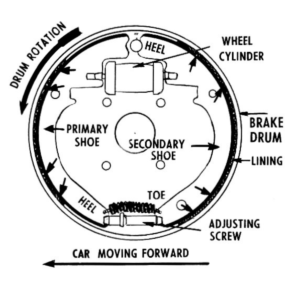
3. Anti-lock Braking System (ABS):
The Anti-lock Braking System (ABS) prevents wheels from locking up during braking, enhancing vehicle control and reducing stopping distances on slippery surfaces. ABS rapidly modulates brake pressure to each wheel, allowing drivers to maintain steering control. It improves safety but may increase stopping distances on loose surfaces.
ABS works alongside your standard disc or drum brakes to prevent wheel lockup during heavy braking. Here’s how it functions:
-
Wheel Speed Sensors
Sensors monitor the rotational speed of each wheel.
-
Electronic Control Unit (ECU)
This unit receives signals from the wheel speed sensors and compares them.
-
Hydraulic Modulator
Based on the information from the ECU, the hydraulic modulator can rapidly adjust the brake fluid pressure at each wheel.
-
Preventing Lockup
If the ECU detects a wheel about to lock (stop spinning), the modulator reduces the pressure on that wheel momentarily, allowing it to start rotating again.
-
Maintaining Control
This rapid pulsing of pressure prevents the wheels from completely locking, enabling the driver to maintain steering control and avoid skidding during emergency braking.

Conclusion:
Understanding the diverse types of car brakes is crucial for appreciating their role in car safety and performance and each brake type, from the common disc and drum brakes to the advanced systems like ABS and regenerative braking, serves a unique purpose tailored to a specific driving needs and car characteristics. Every brake system has its own pros and cons regardless of their use in a particular condition.







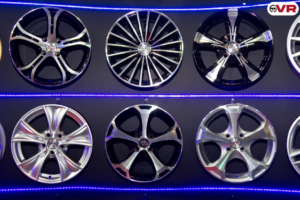
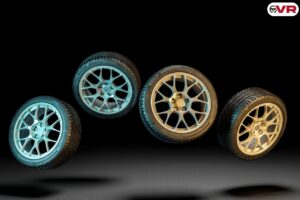
Leave a Reply